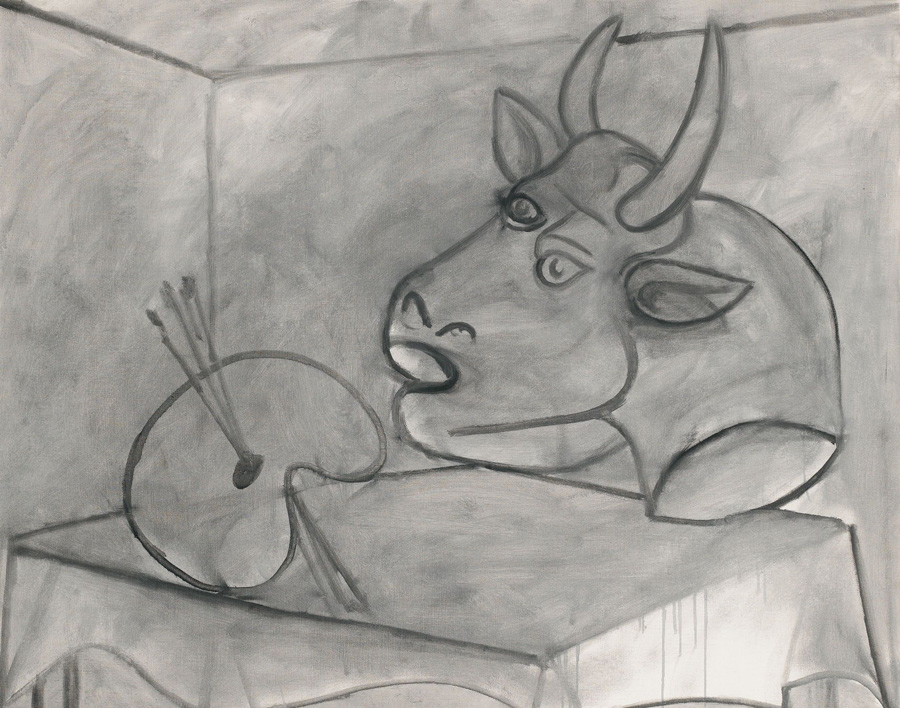On June 6, Sotheby's Paris sold two works by Picasso from the collection of the painter's granddaughter, Marina Picasso. These two paintings, which originally belonged to the Pablo Picasso estate, had not left the painter's studio up until his death in 1973. The two canvases, Palette and Bull's Head (December 10, 1938), and Seated Woman in a Grey Dress (August 31, 1943), for which estimates ranged from 1 to 1.5 million euros for the former and from 2.5 to 3.5 euros for the latter, finally went for 1,395,500 € and 3,793,500 € respectively (hammer price with buyer's premium).
Paul Picasso's daughter Marina decided to part with the two pieces from her personal collection to provide funding for organizations aimed at helping orphaned children and adolescents in difficult situations.
We have chosen to tell the stories of these two works in one article, as both bear witness to Picasso's political and humanistic concerns right before the war and during the Occupation.
"No, painting isn't made for decorating apartments. It's an offensive and defensive instrument of war against the enemy." (Simone Téry, interview with Picasso titled "Picasso n’est pas officier de l’armée française" (Picasso is not an official in the French army), in Lettres françaises, Paris, March 24, 1945, p. 5.)
"The bull is not fascism, but it is brutality and darkness," stated Picasso in an interview with a young amateur painter, Jerome Seckler, in the autumn of 1944 for the American Marxist magazine New Masses; the interviewer had been pressing the artist to claim that the series of still lifes with a bull's head from the end of 1938 constituted a political work along the lines of Guernica. Although Picasso affirmed that, except for Guernica, his paintings were never symbolic, he ended up admitting to Seckler's point of view: "human beings think in political terms, whether they intend to or not." Picasso acknowledged that the pieces he produced during the 1930s and 40s had an unconscious political resonance and that fascism was intrinsically linked to death and destruction. The interview, which was apparently published without changes, provides crucial evidence for understanding the artists' oeuvre from the war years; Picasso almost never expressed his views about the meaning of his art.





 Summary
Summary